The cultural values of the ancient Africanness handed over to their children by Black mothers, even when values disappeared in history and ideas turned moribund through generations of slavery and oppression, with a minimum identity of diasporic narration. Fragmented families, rootlessness, broken tie of families, victimised by the slave trade and later slavery are the experience. Dr. Nachiketa traces the trials and tribulations, the formation and assertion of the Black women’s identity, in an erudite research paper. A Different Truths exclusive for the Special Issue on Africa.
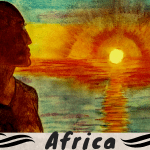
Liberate,
liberate for me the way
Man of Africa!
Liberate for me the great way
Of progress and of Happiness.
For I suffer
That which you suffered
You who Independence
Saved.
Humiliation,
Inequality,
Irresponsibility
Veil still my visage
Sad reality human!
The cloak of shame
Shackles still my gait
Liberate my spirit!
Liberate my arms!
Liberate my legs!
Liberate my wings
Oh! man of Africa!
Free my body
From the heaviness of the past.
Liberty and dignity
Spell the future.
– The Plaintive Song of African Woman by Sékou Touré (1973)
Africanness Redefined
Continent or in diaspora. TransAtlantic slave trade. Colonialism. Sufferings. Cultural heritage and principle tongue passed on from African mother to enslaved mother to African diasporic mother, to conceive diaspora tale. The characteristic Africanness of habits, customs and hopes retained in rudiments. New generation womanhood reclaimed mainly land, heritage, selves. Africanness re-identities, and redefined. Patriarchal subjects were conventional. Writings in the masculine world followed by the male, for the male and of the male. Her hurdles are in producing and reproducing material and social life on one hand, and women’s marginal cultural position on the other.
Recalling fore-mothers found a immemorial past, re created oral traditional context to educate. What Alice Walker did in In Search of Our Mother’s Gardens to tell tale of mother’s stories.
Wilentz (1992) in her diasporic studies analysed Black literature. Black women writers are mainly from African and African-American/Caribbean origin, who wrote in order to explore how women successfully transferred their cultural heritage to future generations on the basis of the commonalities between all women of African descent. Recalling fore-mothers found an immemorial past, recreated oral traditional context to educate. What Alice Walker did in In Search of Our Mother’s Gardens to tell tale of mother’s stories.
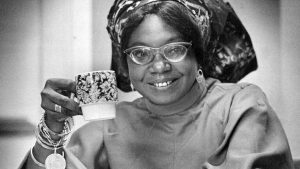 Flora Nwapa, a Nigerian and the first African woman to publish a novel in English (Efuru 1966), two other Ghanaian writers, Ama Ata Aidooy, (The Dilemma of a Ghost, where Aidoo explores a Ghanaian extended family) and Efua Sutherland (in Foriwa ) – examined the role of mother as central to the community in their world. Nwapa’s Efuru, Aidoo’s Anowa, and Sutherland’s Foriwa all followed an African folktale, which preaches to nourish cultural education for young women. A journey from oratory to discourse fit for in traditional society.
Flora Nwapa, a Nigerian and the first African woman to publish a novel in English (Efuru 1966), two other Ghanaian writers, Ama Ata Aidooy, (The Dilemma of a Ghost, where Aidoo explores a Ghanaian extended family) and Efua Sutherland (in Foriwa ) – examined the role of mother as central to the community in their world. Nwapa’s Efuru, Aidoo’s Anowa, and Sutherland’s Foriwa all followed an African folktale, which preaches to nourish cultural education for young women. A journey from oratory to discourse fit for in traditional society.
The cultural values of the ancient Africanness handed over to their children by Black mothers, even when values disappeared in history and ideas turned moribund through generations of slavery and oppression, with a minimum identity of diasporic narration. Fragmented families, rootlessness, broken tie of families, victimised by slave trade and later slavery are the experience. An extended family networks they weave recalling the institutional heritage, values, beliefs and practices. Her real stories are composition of a tough life, wild memories, freedom, captivity, survival, accidents, love, pain and pleasure. Weaved a folk-tale about Africa. African-American or Caribbean motherhood attuned to their traditions as “African”. African family and societal systems, language and cultural patterns remained in the heart to transfer to next-gen narrated by Alice Walker, Toni Morrison, Paule Marshall, Toni Cade Bambara and others of American African. They had a commitment to uncover Morrisonian civilisation underneath. “More a spiritual fore-mother than acted as exotica to these contemporary women writers.”
The Color Purple, a utopian novel on feminist and Africanist theme tell African rural community…
Paule Marshall’s Praise Song for the Widow and Toni Morrison’s Song of Solomon is the legend of the “Flying Africans”. The Color Purple, a utopian novel on feminist and Africanist theme tell African rural community, rural values and commitment to the community. The extended family recapitulated in, The Third Life of Grange Copel of Walker develops whole in The Color Purple. Cultural continuity passed on, values have been mothered, oratory became live and man-made boundaries overcame.
Wilentz (1992) commented, “As the women writers themselves struggle with the male-dominated, (neo)colonialist structures that try to limit their output and their voices, cultural critics of diaspora literature break away from a theoretical perspective which is Eurocentric, male-identified, and restrictive in scope. And the discourse of these women writers decenters a traditional historical focus in its re-articulation of culture, while dialectically it remains centered as Afrocentric and feminist, softening the once violentedged triangle of the slave trade to the circle of the diaspora. For by telling the her-stories of their culture to future generations and imparting traditional customs and social values to the children of those generations, Black women of Africa and the diaspora keep these connections alive.”
Women in Struggle
Elaine(1983) discussed the women in struggle during 1980s South Africa was engaged in all-out resistance against apartheid. Apartheid enacted a system of national oppression through administrative regulations, military power and tyranny. A white minority ruled over the majority of black inhabitants of South Africa exploiting economically. Triple oppression faced by Black women regards to race, sex and class.
Apartheid enacted a system of national oppression through administrative regulations, military power and tyranny. A white minority ruled over majority of black inhabitants of South Africa
The Land Acts of 1913 and 1936 was racial and common to both sexes. Women were not subject to the pass system until 1952. The Bantu Laws Amendment Act of 1964 restricted women staying with husband in an urban area. Women faced discrimination if willing to work in town. Government moratorium of 1979 made women unemployed. Customary law was second hurdle for women. Service including domestic service and farm labour, excluded from the terms of Industrial Conciliation Act of 1979.
Educated urban African women under ANC and Bantu League staged militant resistance Africans to defend their rights and privileges during 1912-60. ANC banned in 1960. In 1961, the movement decided to struggle with arms. Women were inclusive without leadership. Women Workers on Strike, Community Organisations, Women’s Organisations formation were the features of struggle.
To be honest to say the motto of struggle of Black woman can be summerised in the following quote: “First of all, women must fight together with men against colonialism and all systems of exploitation. Secondly, …every woman must convince herself that she can be free and that she has to be free…. And thirdly, a woman must fight in order to convince men that she has naturally the same rights as he has. But she must understand that the fundamental problem is not the contradiction between women and men, but it is the system in which we are all living [Teodora Gomes, Commission of Women, Party for the Independence of Guinea-Bissau and Cape Verde (PAIGC), quoted in Urdang, 1979: 258-9” (The Struggle Within the Struggle, Judy Kimble)].
Black could be Beautiful: Black in Culture
Malia (2010) narrated and analysed stating biographies of Black women in beauty culture. How their persona gained foundlings in the beauty field. Her examples follow. Anne Lowe designed the wedding gown and bridesmaids dresses for the marriage of Jacqueline Bouvier to John F. Kennedy, was reputed member of NAFAD in mid-twentieth century, who specialised in couture gowns making, trained and graduated at the S.L.Taylor School of Design in New York City, owned dress shop on Lexington Avenue in New York, created original designs for débutantes in the Dupont, Rockefeller, Roosevelt,Vanderbilt,and other elite American families, but experienced racial discrimination in her school. Her five-decade bright career was less exposed in the public domain, less attention was paid.
DeVore crafted an international strategy to promote her Black models first in Europe and next to build their careers in the United States.
Looks not like a Negro! According to her white fellow’s compliment inspired DeVore to start her own modelling agency in order to popularise a dignified image of Black womanhood that people around the world would respect and to create “an internationally acceptable person of color.” DeVore crafted an international strategy to promote her Black models first in Europe and next to build their careers in the United States. From the late 1940s, DeVore began promoting African American models through her agency Grace Del Marco Models, strategically selected European settings.
She helped Helen Williams and Cecilia Cooper to establish. Coopar won the “Miss Festival” title at the International Cannes Film Festival first among colour. Lejeune Hundley and Emily Yancy next prize winner from another platform. DeVore was able to find modeling jobs for them with major domestic companies such as, Johnson & Johnson, Pepsi Cola, and Revlon. Those were the story of American persona having Africanness in the heart.
Following DeVore, Barbara Watson brought Black models in exposure in the United States to the larger fashion world.
Following DeVore, Barbara Watson brought Black models in exposure in the United States to the larger fashion world and international background during 1948. Her models got grand coverage and positive reviews in the foreign press. Watson planted the public perception that the “Black female body was an aberration from the white ideal”. In 1953, created Barbara Watson Models. Watson supervised more than 200 professional models of colour. She secured contracts for her models with a wide variety of companies Beech-Nut Gum, Ipana Toothpaste, Colgate Dental Crème, Remington Rand, Tetley Tea, Noxema, Lucky Strike, and Lysol.
American beauty-culturist proved and asserted Black could be beautiful.
Dorothea Towles, a Texas native, worked in Europe. She was the first African American to attend the Dorothy Farrier Charm and Modelling School in Los Angeles. Towles used her talent as a professional model to push the boundaries of what  was possible for Black women on the global to be the first black international model. American beauty-culturist proved and asserted Black could be beautiful.
was possible for Black women on the global to be the first black international model. American beauty-culturist proved and asserted Black could be beautiful.
In the field of cosmetology, Black female entrepreneurs such as Annie Turnbo Malone, Sarah Spencer Washington, and Sarah Breedlove Walker marked their footprints in the early 20th century. Black beauty-culturists promoted, nourished and established an image of Black women in America, Europe, and Africa, as sophisticated connoisseurs of modern fashion. Thus, a “race woman” was a female, who actively promoted the Black political agenda for economic, social, or political empowerment wining hegemony of the “white is right” aesthetic and founded triangle trade between the Americas, Europe, and Africa. (Malia 2010)
Cultural politician Annette Mbaye d’Erneville is feminist, journalist, writer, media activist and culture critic engaged in forging important institutions such as the Association Sénégalaise de la Critique Cinématographique, Rencontres Cinématographiques de Dakar (RECIDAK). Guadeloupean Sarah Maldoror, also a filmmaker. Safi Faye, Senegalese film director and ethnologist, and others were leading women in film during 1960-70s. They joined Pan African Film and Television Festival of Ouagadougou (FESPACO) and the Pan African Federation of Film-makers (FEPACI), both took part in independence movements during the sixties.
Amy(2008) worked on Douglas, the American artist and her sweetheart Alta Sawer, their relationship and artist’s confidence on Black beauty discourse and emergence of contextual Black womanhood: “We are possessed, you know with the idea that it is necessary to be a white to be beautiful nine times out of ten. It is just the reverse. It takes lots of training or a tremendous effort to down the idea that thin lips and the straight nose are the apogees of beauty. But once free you can look back with a sigh of relief and wonder how anyone could be deluded” [Douglas wrote to Alta Sawyer, 1925].
The marvellous artist Douglas wrote this his wife, Alta Sawyer, who was more than his inspiration, celebrated Afro-American features in different ways…
The marvellous artist Douglas wrote this his wife, Alta Sawyer, who was more than his inspiration, celebrated Afro-Amercican features in different ways and his another inspiration was Black Intellectual W.E.B. Du Bois, Editor of Crisis magazine, who also celebrated the pain of oppression of women and beauty of Black, “I honour the women of my race their beauty – their dark and mysterious beauty of midnight eyes crumbled hair and soft full features…. No other women on earth could have emerged form the hell of force and temptation which once engulfed and still surrounds black women in America with half the modesty and womanliness that they retain,” and he laments, “Bring some tributes to this long suffering victims, the burdened sisters of mine whom the world the wise, white world, loves to afferent the ridicule and wantonly to insult”. Again proclaimed – “None have I know more sweetly feminine more unswervingly loyal more desperately Ernest, and more instinctively pure in body and in soul than the daughters of my black mothers.” [Du Bois “The damnation of woman” Dark Water: Voice from within the veil, New York 1920].
Historical Maniema Glory
Curdy (2006) astonishingly cited the vivid description of Maniema women in ornaments like archaeological diva in her paper, “Fashioning sexuality, desire, Maniema ethnicity and the creation of Kanga” (Ca) 1880-1900. As Hutley had noted during the early 1880 and European traveller Decle noted again during 1893, “The Zanzibar Wives are the most elegant women of Africa, several times … I observed them in their glory, they are mostly Maniema women, generally slaves, taken very young, their colour is dusky yellow, they wear one ivory or silver button in the left nostril and five in each ear; the cheek is decorated with half a dozen bluish marks like ink stains, which are made with of fruit juice. Some of the paint under the eyes, their headdress is also remarkably ambitious for Africa. They divide their hair into some dozen traces and plaits together between each two partings; the end of each plate in full dress they wear silk trousers with heavy silver anklets which come from Zanzibar. They walk barefoot not without a certain grace and are heavily performed with a mask. Nobody will be surprised that these magnificent beauties are very vail, they can make eyes at the passer-by against any women in the women….”
Beauty Standardised
Lavon(1990) upholds the evolution of beauty concept of Morrison. Morrison never accepted the white-defined beauty, stating it unreal. Later she redefined beauty, corroborating to reality, the reality of the body and racial experience. She opined, “Black women are OK with short necks, calloused hands, and tired feet to claiming that these attributes are beautiful and more authentic than popularised standards of White female beauty because they reflect women who are useful and real.”
Morrison never accepted the white-defined beauty, stating it unreal.
Redefinition of both beauty and the specular system are remarkably great in her works on The Bluest Eye or Song of Solomon, and Tar Baby. Morrisson criticised  in The Bluest Eye on the effects of white-defined images of female beauty on black women, and in Song of Solomon, she made a redefinition of female beauty on an element in a male protagonist’s quest for self, in Tar Baby Morrison’s central question is a beauty.
in The Bluest Eye on the effects of white-defined images of female beauty on black women, and in Song of Solomon, she made a redefinition of female beauty on an element in a male protagonist’s quest for self, in Tar Baby Morrison’s central question is a beauty.
Lavon characterised, “Morrison interweaves themes of artifice, nature versus nurture, the gaze, sexuality, racial identity, and commercial images of female beauty, and offers a definition of black female beauty that explodes most of the frameworks commonly used to talk about it. Her principal vehicles are a white beauty, Margaret, and a black beauty, Jadine. Through the White beauty, Morrison explores the specular system and critiques White-defined standards of female beauty; through the Black beauty, Morrison illustrates the internalisation of these standards by black women and the black community. It is through a series of marginal characters that Morrison develops an alternative, black-defined standard of beauty: in the woman in yellow, Therese, and the island landscape (which, because of Morrison’s rich personification, can be classified as a character).”
Here, Morrisonian ideas established who standardised the Black women beauty standard.
Women in Identity
In order to define their reality, standpoint and emancipation from the hegemonic forces (Sexism-Racism-Classicism) Black women feminist theory emerged gradually. Black women experienced tridimensional oppression regarding race-class-gender.
Simms(2001) discussed through an argument in order to examine images of “Mammy”, “Jezebel” and “The Mule” presented as the dominant ideology for pro-slavery exploitation of African female in life and different realms. Realms include natural science, popular literature, social science, politics, law and philosophy. Black Feminist theoreticians are Tony Bambara, Katie Cannon, bell hooks, Audre Raude, N.Ntozake Shange, Alice Walker, Angela Davis.
Jezebel image is induced forging such an image of sex-starved, lusty animistic, beastly, promiscuous libidinous that to rape her is pious, making her breeder and toy.
Controlling images were created by slave owners to control over socio political and ideological theme of Black women in different period. Mami Image interprets Black women happy in her subordination byWhite/master/family like trusted dull head on call servitude, able to stabilise White male domination. Jezebel image is induced forging such an image of sex starved, lusty animistic, beastly, promiscuous libidinous that to rape her is pious, making her breeder and toy.
Mule image is taken as token of bonded labour like beast of burden or domestic stock. All the images justifies exploitation of enslaved human and particularly women. Age of Mammy passed. New dreams arrives. Dream turns into real phase. SEKOU Touré addresses, “After a long hard period of being discredited, African woman ardently aspires to be treated with dignity; she intends to become man’s equal; she wants her social standing, that her role be integrally restored; she means to assume all her human responsibilities, on the political level as well as on the economic, social, cultural and familial level. We reaffirm the fact that liberty and the promotion of the African woman constitute an indissoluble part of the liberty and the emancipation of the African peoples, for the human condition of women reflects the level of evolution attained by a given society.” [SEKOU Touré, descended from a long line of Guiñean freedom- fighters, has been President of Guinea since it gained independence from France on September 28,1958] (SLOAN -1973)
The twentieth century, however, brought a distinct wave of African women who fell well within the definitions of the controversial word. Women like Margaret Ekpo, Huda Sharaawi, Adelaide Casely-Hayford and Funmilayo Ransome Kuti all proved that feminism was never a borrowed ‘culture’, but simply a borrowed word.
Catherine Coquery-Vidrovitch(1994) beautifully crafted the status of her in the history of African women. In the post-modern world, she concerned that ‘woman’ may no longer exist. She argued the complexity of women’s status and their womanist position based on region, religion, coloniality, socio-economical and cultural. Her scope limited by geography – “Africa south of the Sahara – and by race – excluding white women, most notably in South Africa.” Informed us of the reality of African women’s one commonality of work burden. Work period beyond clock. Overwhelmed with multi-task jobs of all kinds. scarcely recreation. Leasure in a dream. Neo-slavery.
Women in Moral
Isabel Phiri(2004) examined the Africa women theologies in southern African through the circle of African Women Theologian. Their theologies belong to a wider family of feminist theology connected to liberal theology, are varieties of Christian theology.
African experienced the gospel as a tool of colonialism, racism, sexism, classicism, and exclusivism.
Feminist theology emerged during 1960 aiming at the education of women’s oppression sexism, patriarchal hegemony of life, in life. Attention was concentrated by women’s movement on the issue of racial, cultural, social, historical, religious, political, the situation related to gender discrimination. African experienced the gospel as a tool of colonialism, racism, sexism, classicism, and exclusivism. Whereas African cultural theology raised voices against and missing interpretation of African religion as they knew God before Christianity. That’s why American women theologian put the African culture as a significant and important one. Women were alive on their statement during the conference, in 1998, in South African Conferences where resolved that Black theology cannot be liberation theology until liberation of women take place. African women’s theologies are a critical, academics study of the causes of women’s oppression. Strongly against societal cultural and religious patriarchy.
Black Women in the 21st Century
African women are strong in agriculture born peasntress. Agro trader. Aware of local commerce. Economically active. Majority of them are in the informal labour force. In 1985, women’s shares in African labour forces ranged from 17 per cent, in Mali, to 49 per cent in Mozambique and Tanzania (World Bank, 1989). Manager of sweet home. Warden of children. Custodian of children’s welfare. Responsible to provide them daily life. In-charge of health and hygiene. Supply and store food drinks water nutrition minerals to the child. Great household managers. Raise them educationally. Family planning practitioner as far as practicable than in the developing world. In spite of the wave of developments of twenty-first century, advanced rural science and agriculture technology, availability of contraception and reproductive health awareness, and altered women’s socio-economic status, life is tough and rocky. Workload is more than ever. Social situation non-remedial for their comfort neither economic situation brings happiness. Women-centric economic power is at distant. Vulnerable economic life. They suffer from Modernization capitalism bureaucracy war democracy or patriarchy. All odds in daily life. “The legal framework and the modern social sector and producer services developed by the independent African countries have not served women well. Most African women, in common with women all over the world, face a variety of legal, economic and social constraints.” (United Nations University Reports).
In the mid-197os, Editors Nancy Hafkin and Edna Bay (1976), Audrey Wipper’s collection, Rural Women: Development or Underdevelopment? (1975-76) discussed women farmer ’s income, household type, and resettlement circumstances. Women’s access to resources and women econometry. Edna Bay edited Women and Work in Africa, Nici Nelson’s African Women in the Development Process. Jette Bukh (1979) surveyed on rural women in Ghana. Zed Tadesse (1979), Achola Pala Okeyo (i980), and Jennie Dey (1981) worked out land, farms, resources, respectively, on revolutionary Ethiopia and reformist Kenya and Gambia. But women’s right, economic rights and equity was on silent mode.
Cultural and social norms are not woman-friendly rather resistive. Women’s involvement in business or entrepreneurship is not supported by social norms.
Africa is populous. It will remain. World’s population growth is when simulated in Africa, more than half of the world count is projected. “A powerful untapped economic force” addressed by the economic forum (2018). Cultural and social norms are not woman-friendly rather resistive. Women’s involvement in business or entrepreneurship is not supported by social norms. Budding and aspiring female entrepreneurs rarely inspired by supportive networks, guides, family support or communities. Service to a household is never accounted for. Remain unpaid. Care works unappreciated. Poverty and the double burden of labours is the outcome.
Conclusion
Sisonke (2000) cited – Lesiba Teffo’s support for the cause of feminist lobby in his paper ‘Moral renewal and African experiences‘, in the context of Renaissance in South Africa in order to develop a real people reducing gender discrimination in education and in a vital and necessary field where discrimination and oppression exists. As parental role for future gen is indispensable. History is not so vocal for Women in African Renaissance. The ‘Black’ is important. Is it than the ‘woman’. New democracy have to look after feminist theorising to combat oppressive ideology.
Black women in diaspora having geographic, historical and cultural ancestry is Africa. Nationality non-African. She faces questions of her root. Her humanity threatened even in diaspora. Her dignity jeopardized due to lack of recognition and to be protected. Likewise, western born universal African feminism consolidates the claim of an African woman in the diaspora in the struggle for freedom, justice and equality in order to unify politically.
Beverly (2003) cited keynote address of Ama Ata Aidoo in, The African woman  today – “When people ask me rather bluntly every now and then whether I am a feminist , I not only answer yes but I go on to-insist that every woman and every man should be a feminist especially if they believe that Africans should take charge of African land, African wealth, African lives, and the burden of African development. It is not possible to advocate independence for the African continent without also believing that African women must have the best that the environment can offer. For some of us, this is the crucial element in our feminism.”
today – “When people ask me rather bluntly every now and then whether I am a feminist , I not only answer yes but I go on to-insist that every woman and every man should be a feminist especially if they believe that Africans should take charge of African land, African wealth, African lives, and the burden of African development. It is not possible to advocate independence for the African continent without also believing that African women must have the best that the environment can offer. For some of us, this is the crucial element in our feminism.”
Carole Boyce Davies introductory records of her anthology – “it examines African societies for institutions which are of value to women and rejects those which work to their detriment and does not simply import Western women’s agendas. Thus, it respects African woman’s status as a mother but questions obligatory motherhood and the traditional favouring of sons… it respects African woman’s self-reliance and the penchant to cooperative work and social organization… [it] understands the interconnectedness of race, class, and sex oppression.”
Afro-centric thinkers propose re-Africanisation. It is also elusive that Europeanisation of African people has brought every success.
Afro-centric thinkers propose re-Africanisation. It is also elusive that Europeanisation of African people has brought every success. Deculturalisation as agents of oppression. She holds power. She holds knowledge. She considered knowledge. Power and Knowledge are factors. Interplay acts. It throws light on hybridity and acculturation. She overcomes coloniality vices. Stand-alone survives against stress of economic and political control the colonising power. Waters cultural environment. Express themselves in art, culture, science, aesthetics, and spiritual context. She has been shaped mentally and physically. She serves black heritage. She evokes tradition. It is inherent Africanness.
Rainatou Sow, Executive Director of Make Every Woman Count, “As we are now halfway – into the African Women’s Decade (2010-20), it is time to ask ourselves: ‘Where are we now in terms of women’s rights on the continent?’
But you would not say by the smile she bears
to kiss she sun rise each morning
Grateful just to be alive with her children and man
Her laughter inspires birds to sing new melodies
She hates war with all her heart
Every time she’s called upon to sing and dance for one victory
Her hips sway longingly for all wars to end
For every bullet on the African soil
To turn to a ripe juicy fruit
A vegetable seed or a cup of creamy milk
The woman of Africa wants to sing a song of love
To bring back old wisdoms that will shine a new light
Brighter than the stars in the night sky
For all her tears and laughter, her wishes and endeavours
May all the springs, lakes and rivers, sing her praises
Every single day so we may not tire
– Gcina Mhlophe
References
1. TheAfrican Woman: Text and Poem by Sékou Touré: JESSE SLOAN : The Black Scholar, Vol. 4, No. 6/7, Black Women’s Liberation (March-April 1973), pp. 32-36
2.Gay Wilentz : Toward a Diaspora Literature: Black Women Writers from Africa, the Caribbean, and the United States Gay Wilentz : College English, Vol. 54, No. 4 (Apr., 1992), pp. 385-405.
3. Unterhalter Elaine: Women in Struggle: South Africa : : Third World Quarterly, Vol. 5, No. 4 (Oct., 1983), pp. 886-893
4. MC Andrew Malia :A Twentieth-Century Triangle Trade: Selling Black Beauty at Home and Abroad, 1945—1965 : : Enterprise & Society, Vol. 11, No. 4 (December 2010), pp. 786-812
5. Krischke Amy, The Burden of Black Womanhood: Aaron Douglas and the ‘Apologee of Beauty, American Studies, Vol -49, No – ½, Aaron Douglas and the Harlem Renaissance (Spring/Summer 2008), pp 97-105 published by Mid American studies association
6. Sheryl M.C. Curdy, “Fashioning sexuality, desire, manioma, ethnicity and the creation of “Kanga (Ca) 1880-1900, the international journal of African hsitorical studies volume- 39 , No -3 (2006) page 441-469.]
7. Walther Malin LaVon: Out of Sight: Toni Morrison’s Revision of Beauty : Black American Literature Forum, Vol. 24, No. 4, Women Writers Issue (Winter, 1990), pp. 775-789.
8.Rupe Simms: “Controlling images and the gender construction of enslaved African women”, Gender and Society : Vol -15 No -6, December -2001 , pp-879-897].
9.The African Woman: Text and Poem by Sékou Touré: JESSE SLOAN : The Black Scholar, Vol. 4, No. 6/7, Black Women’s Liberation (March-April 1973), pp. 32-36
10.Les 4fricaines: Histoire des femmes d’Afrique noire du XIXe au XXe sieele. Par Catherine Coquery-Vidrovitch. Paris: Editions Desjonqueres, I994
12.World economic forum-www.weforum.org/agenda/2018/03/why-women-hold-the-keys-to-africas-future
13.Phiri Isabel: “African women theologies in the new millenium empowering women for gender equity”; no 61, Regilion and Spirituality (2004)pp “:16-24
14. Gcina Mhlophe:A Brighter Dawn for African Women: Gcina: Agenda: Empowering Women for Gender Equity, No. 43, Women and the Aftermath (2000), p. 90
15. Msimang Sisonke: African Renaissance: Where Are the Women? : Agenda: Empowering Women for Gender Equity, No. 44, AIDS: Global Concerns for Women (2000), pp. 67-83
16. Guy-Sheftall Beverly: African Feminist Discourse: A Review Essay : Agenda: Empowering Women for Gender Equity, No. 58, African Feminisms Three (2003), pp. 31-36.
17.RainatouSow
http://www.un.org/en/africa/osaa/pdf/events/2018/20180315/AfricanWomenDecade.pdf
©Dr. Nachiketa Bandyopadhyay
Photos from the Internet
#IWD2019 #BalanceforBetter

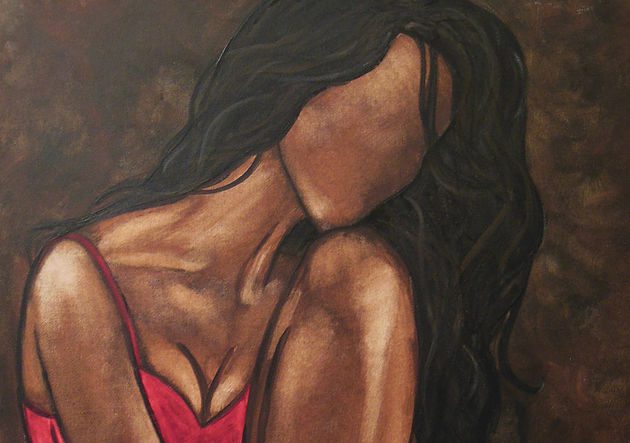

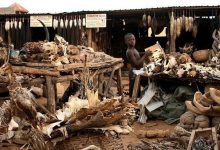

 By
By
 By
By
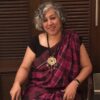 By
By
 By
By
Congratulations on this excellent and well documented article!
“Liberate my spirit!
Liberate my arms!
Liberate my legs!
Liberate my wings”
Irina Lucia Mihalca
Bucharest – Romania
Hats off to you Sir for the article.
Regards